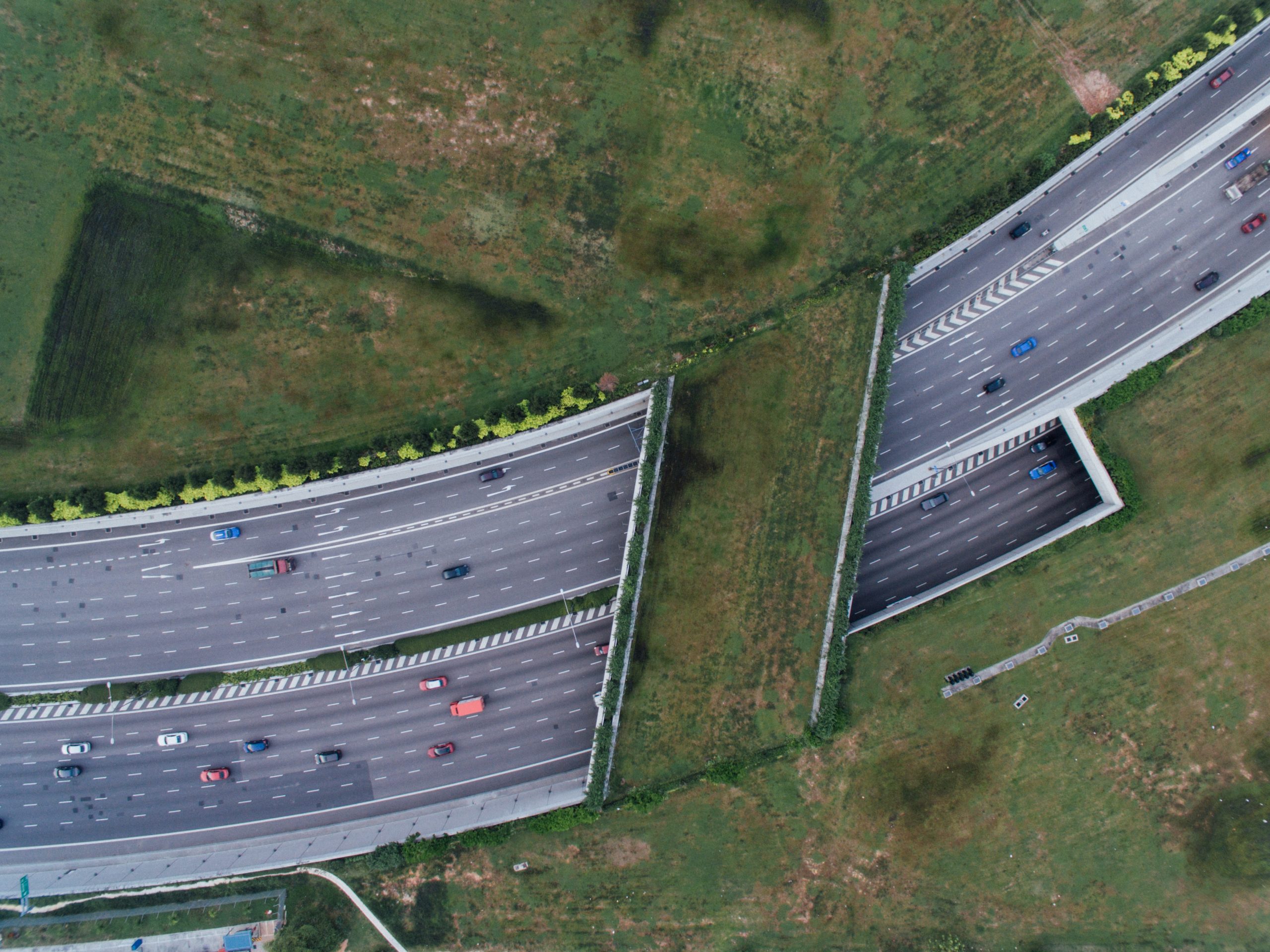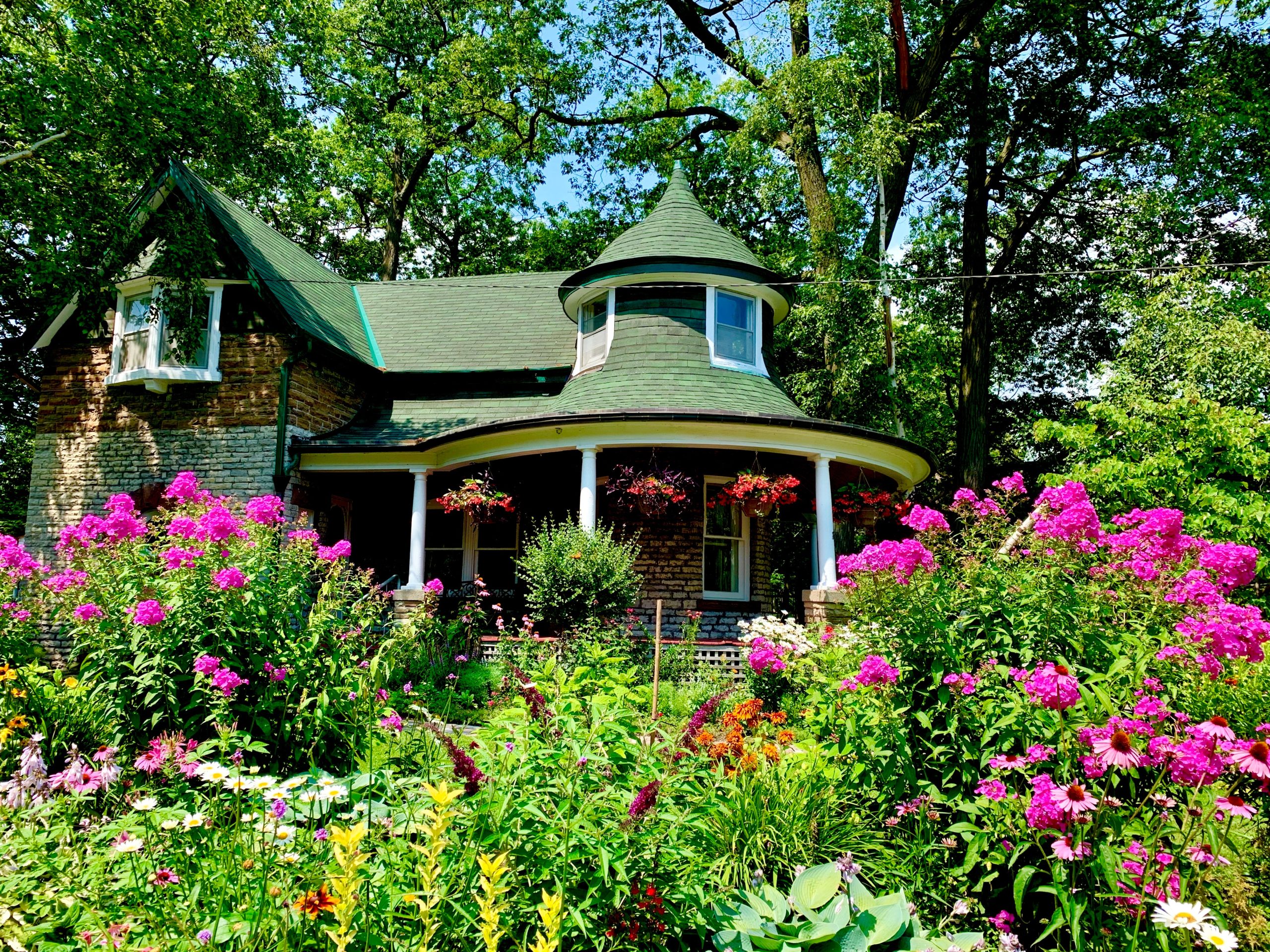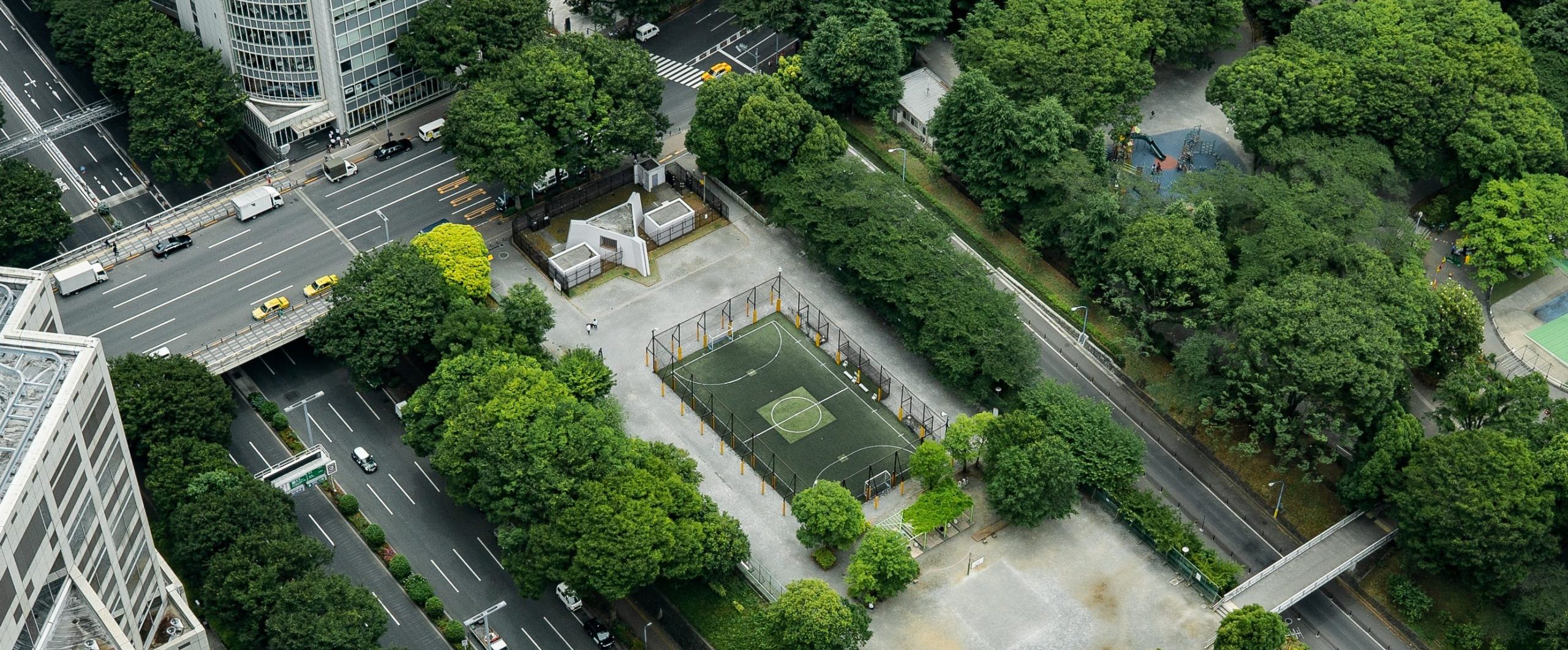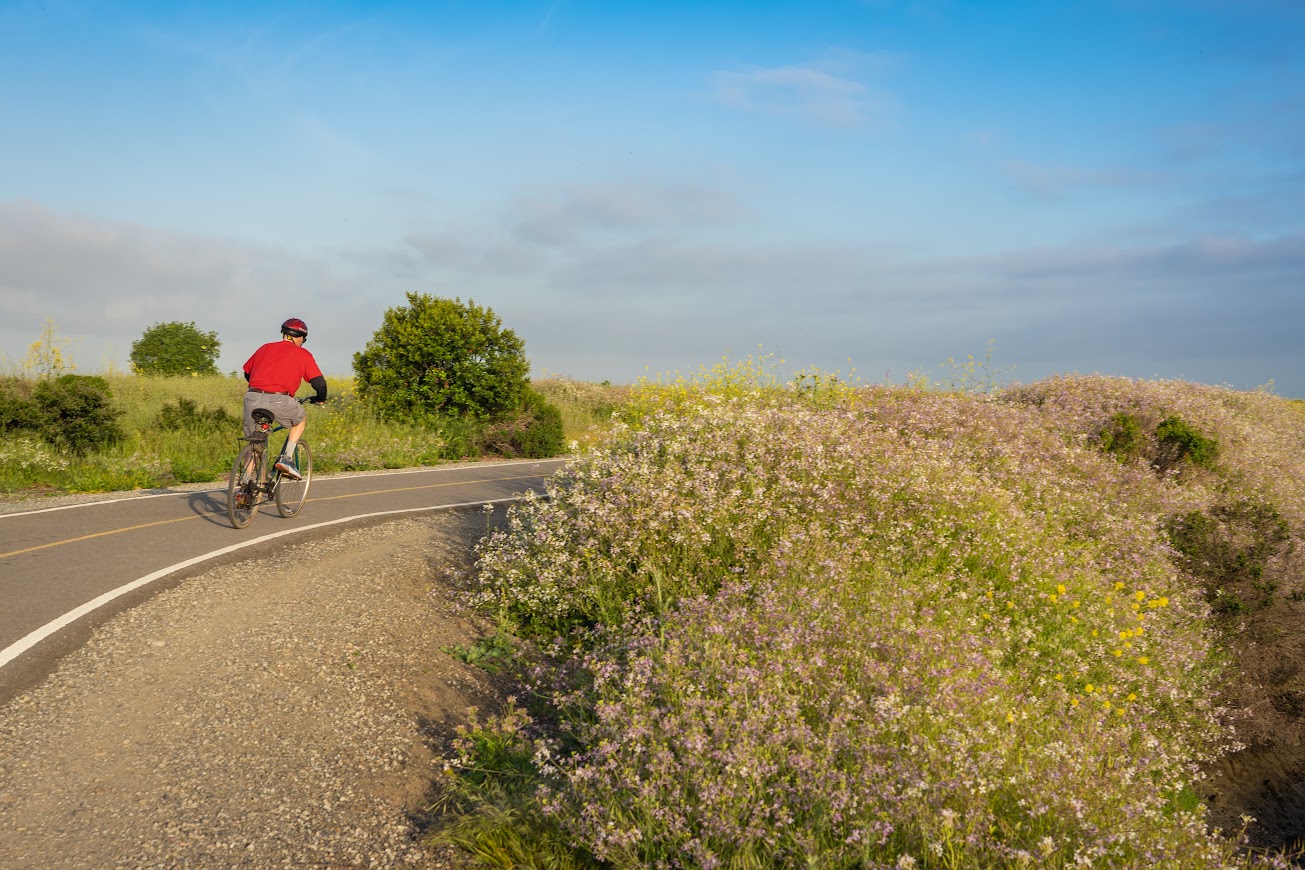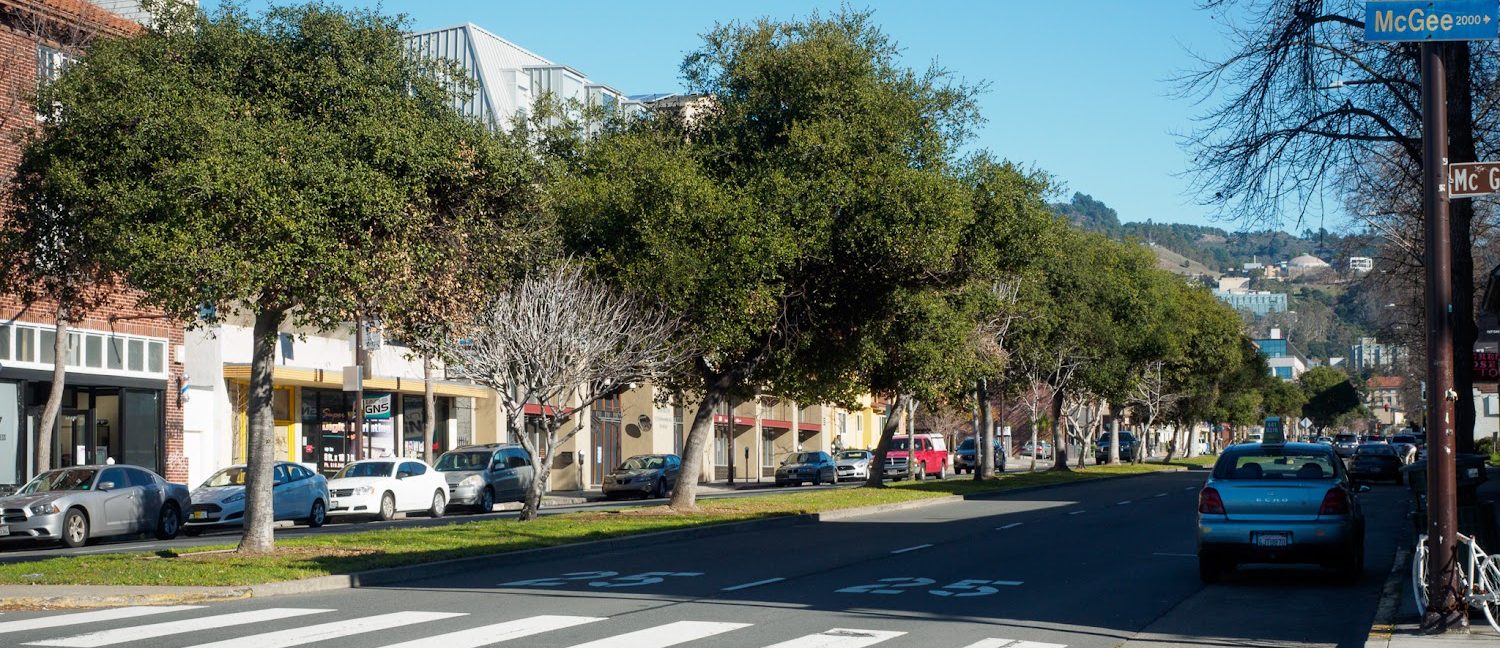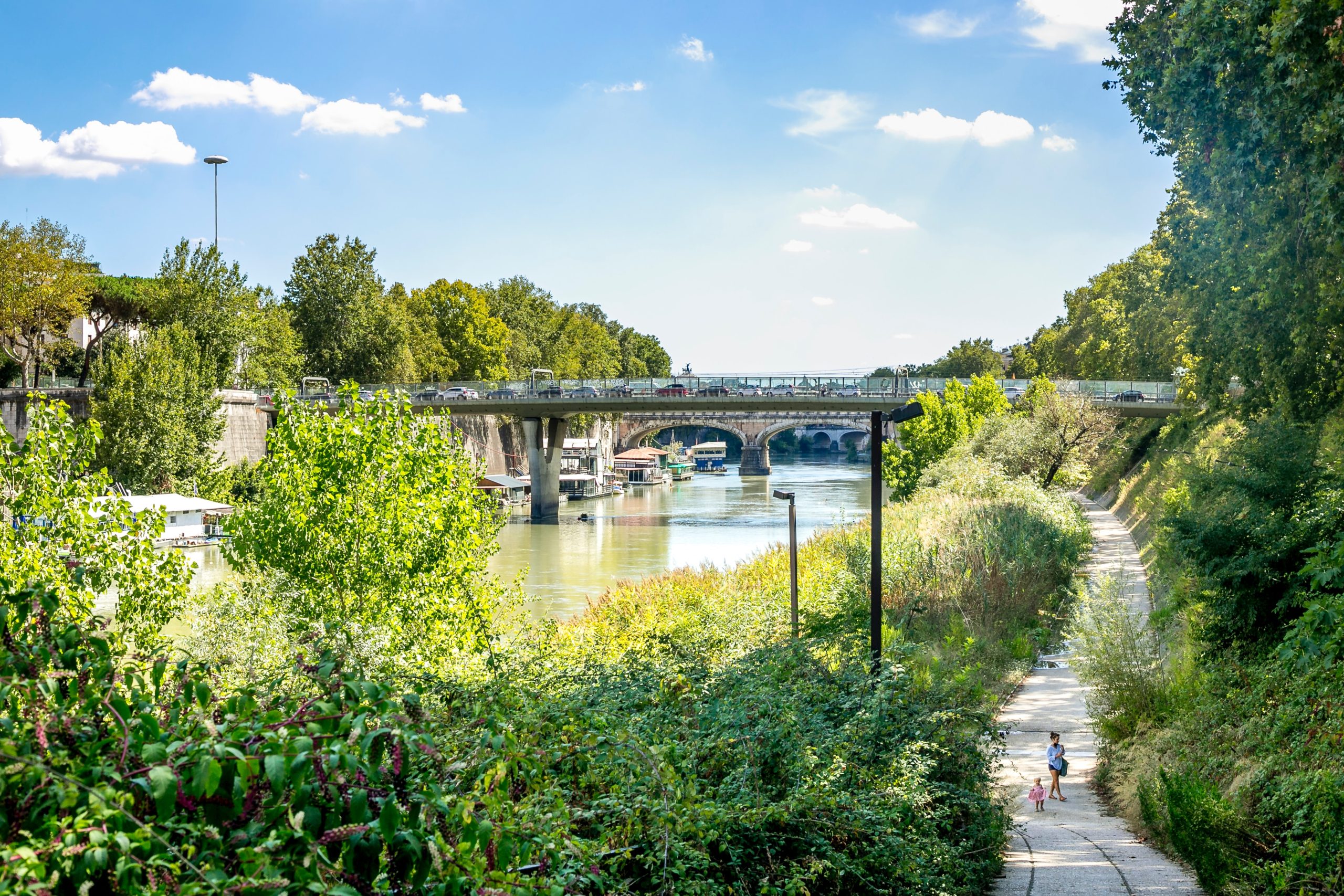Connections
Image credits: Kelguen, CC BY 2.0
Connections are features in the urban landscape, such as linear vegetated features, that facilitate the movement of plants and animals between patches.
Contiguous stretches of vegetation linking wider greenspaces, such as green corridors along waterways and right-of-ways, form some of the most effective connections in cities. In the absence of continuous corridors, “stepping stones” of matrix habitat, such as closely-spaced pocket parks or green roofs, can increase the ability of species to move between patches, particularly when they are targeted for the needs of a focal species.
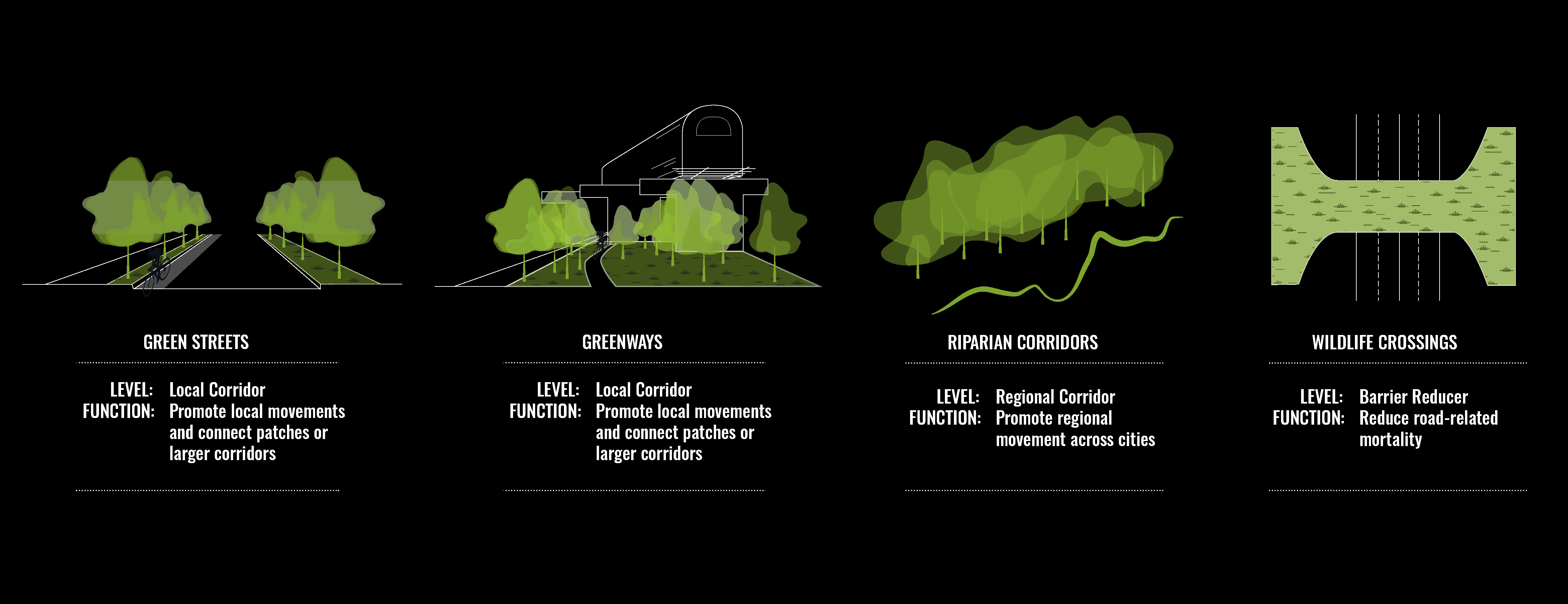
Relevant Planning and Design Strategies
The Urban Biodiversity Framework identifies seven key landscape elements that, when integrated together into urban design and planning, have the greatest chance of supporting the greatest number of species. Each element is related to various strategies from the urban planning, site design, and detailed design chapters.
- All Strategies
- Urban Planning
- Site Design
- Detailed Design
CONNECTIONS
Connections are linear vegetated features that facilitate the movement of plants and animals between habitat patches. Contiguous stretches of vegetation linking wider greenspaces, such as green corridors along waterways and right-of-ways, form some of the most effective connections in cities. In the absence of continuous corridors, “stepping stones” of matrix habitat, such as closely-spaced pocket parks or green roofs, can increase the ability of species to move between patches, particularly when they are targeted for the needs of a focal species.
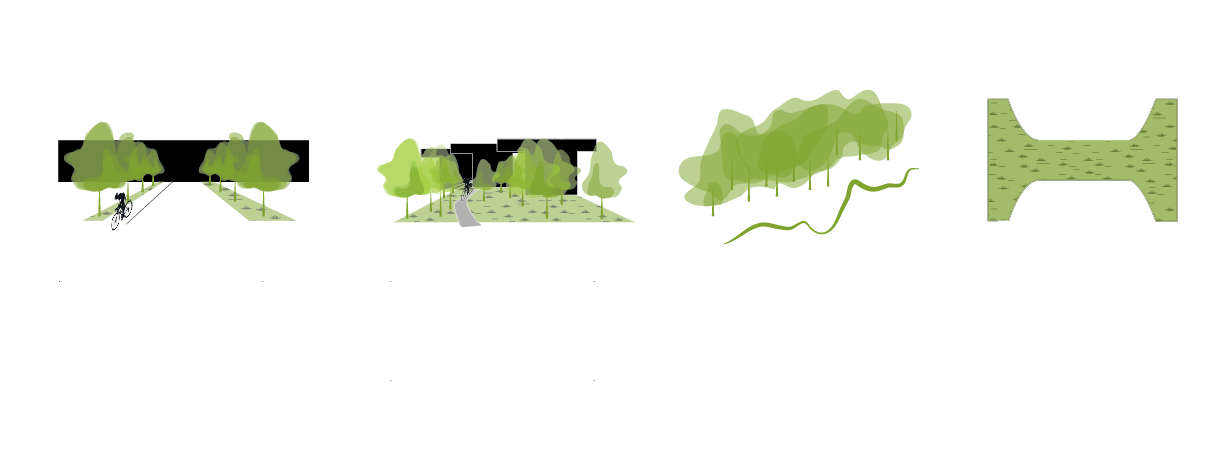
ACTIONS YOU CAN TAKE
Roads and even single lane streets present an often impassable barrier for wildlife movement. Bridges with vegetation and habitat that cross above highways, wildlife friendly culverts, and other connections both over and under roadways can greatly enhance connectivity in urban areas.
Many creeks and streams in urban environments have been channelized and buried beneath urban infrastructure and development. Daylighting these waterways, or uncovering buried watercourses and restoring them to more natural conditions, has important hydrological and ecological benefits. In particular, waterways can create connections across urban landscapes for wildlife.
This action also supports: Habitat Diversity, Special Resources
Corridors dedicated to natural habitat and wildlife movement, such as forest corridors and rivers and streams with adjacent riparian habitat, are the most effective connections between patches. Hydrological connectivity in particular can be improved by removing barriers to fish passage, or by setting back or removing levees to reconnect streams to floodplains.
The creation of small clusters of native vegetation or small water features can enhance “stepping stone” connectivity between large, high-quality patches. City parks, networks of connected backyards, and even the smallest open areas, such as street corners, intersections, biorentention basins and narrow medians, are all examples of urban greening actions that can create stepping stones. To promote the effectiveness of stepping stone features, the habitat characteristics, size, and distance between stepping stones can be designed to support target species, enabling their movement through the city. For example, certain host plants can enable butterfly dispersal, or high value trees can provide calories for insectivorous migrating songbirds.
This action also supports: Connections, Matrix Quality, Native Vegetation
Related precedent: Green Hairstreak Corridor – San Francisco, CA, USA
Pockets of greenspace within existing streets can promote local wildlife movement and connect patches or larger corridors. Additions can include bioretention basins, street trees, street planters, and re-planted medians. One way cities can promote the widespread creation of green streets is by adopting city policies that reward development projects that build green street features.
This action also supports: Matrix Quality
Related precedent: Caribbean Green Ave – Sunnyvale, CA, USA
Native trees and understory plants incorporated into streetscapes between patches can create a nature-rich greenway (or “nature way”). The incorporation of relatively high quality, wide, and continuous habitat elevates the function of conventional green streets to “nature ways.” Nature nays provide habitat alongside infrastructure corridors that offer relatively uninterrupted movement pathways through cities, such as powerline or pipeline corridors, canals, or streets. These features can also provide important community benefits for active transit, recreation, and health.
This action also supports: Matrix Quality, Habitat Diversity
Related precedent: Nature Ways – Singapore
Conservation easements, land acquisition, or legislation can grant special protection status to existing, high quality wildlife corridors. One policy cities can implement is increasing setback distances for developments adjacent to streams, rivers and other waterways to protect existing riparian corridors. Cities can also partner with other jurisdictions in the region to protect corridors that span across jurisdictional boundaries.
Although some species are able to cross gaps in vegetation or tree canopy cover, even small gaps can limit movement of ground-dwelling or urban-sensitive species. Identifying and filling these gaps can help support movement of these species. For example, targeting native tree and vegetation plantings to fill in canopy gaps above street intersections can help provide an ecological “bridge” across streets.
This action also supports: Matrix Quality
Related precedent: Nature Ways – Singapore
The value of wildlife corridors is closely connected to their width. Wider corridors can facilitate movement of a greater diversity of species. Increasing the width of riparian forests along creeks, wetland habitat along shorelines, vegetated strips along greenways, and wildlife habitat along infrastructure corridors such as powerlines, underground pipelines, and canals can enhance these rare uninterrupted pathways through the city.
Connectivity within greenspaces can be enhanced by creating high-quality habitat around existing features such as water features or large trees. Reducing or removing local barriers, such as through road removal or seasonal closure of roads during peak ecological activity, can also serve to enhance connectivity within greenspaces.
This action also supports: Patch Size
Increase the ability of species to move across fences, impervious surfaces, buildings, and other minor barriers. When infeasible to remove fences or other barriers, the addition of small doorways, strips of vegetation, or gaps appropriate for target species can help wildlife move across the landscape.
This action also supports: Management

